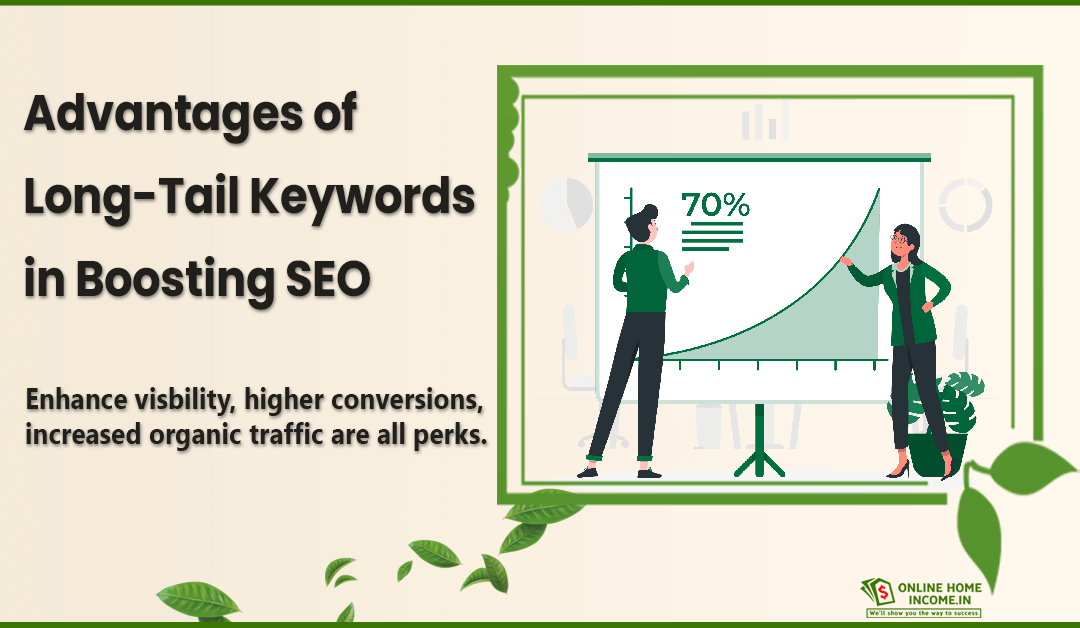When starting your blog, you must ensure it is readable on all devices. Let us learn how to optimize your blog for mobile devices and responsive blog design.
Before we start, let me ask your opinion on the following situation.
Imagine you are cooking a dish in your kitchen, say Gobi(Cauliflower) Manchurian. As per the recipe, you have marinated the ingredients. Now you have certain doubts.
- How long should you let the cauliflowers marinate?
- Should you freeze the marination or leave it at room temperature?
- What is the temperature for frying in oil?
Such doubts can come at times during your cooking journey. So, what will your immediate course of action be?
You will take out your mobile phone and Google those questions above or the recipe. What will you get in your search results?
You will get blogs that have answers to the above solutions. They can either be as FAQs or a part of the recipe.

⇒ Does $10 a day in your bank will make you happy? If so, here is an exciting opportunity for you to start free.
⇒ All you need is a Smartphone with an Internet connection. | Join today!
In this situation, would you have logged on to your desktop, patiently Googled, and viewed the results? No way!
Also, you may find that the same results that popped into your mobile will come on your desktop.
From this, we can understand that Google search results contain blogs and websites suitable for mobile and regular desktop screens.
So, from this situation, you would understand the importance of optimizing your blog for mobile devices and screens.
Let us learn how you must develop a mobile-friendly blog with mobile SEO strategies and come to the top search results.
Is It Necessary to Optimize Your Blog for Mobile?
Your blog’s success depends on organic traffic from the Internet. This organic traffic refers to readers who search for a solution and arrive at your blog.
For readers to come to your blog, you must optimize your blog for mobile SEO. Only then will your blog be listed on the search results’ first page.
It is well known that users hardly go beyond the first page or the top 10 search results. Therefore, bloggers must optimize each blog post with SEO metrics to rank high.
👉 Today, Google prioritizes user experience among many other SEO metrics.
The experience from your organic traffic matters a lot in getting your blog to the top over time. However, this traffic source can view your blog from various devices.
Mobile devices are more preferred for browsing today than ever before.
Around 60% of Internet users search and browse using their smartphones or tablets.
If you observe the top search results in Google, you will find they can be viewed on mobile devices too.
From these facts, we can conclude that mobile-optimized blogs have the best chances to rank high on search results over those without mobile support.
Mobile SEO has metrics similar to the standard website, with more specifications aligned to the mobile device setup.
Scroll further to learn some of the best practices for mobile SEO. How to do a responsive blog design and make it versatile for all devices?
Let me answer further.
Why Mobile Optimization Matters?
Optimizing your blog for mobile devices increases your organic traffic.
Today, mobile devices, especially smartphones, come in various models from many brands. Each has its processing abilities, screen resolutions, memory requirements, etc.
As a blogger, you must ensure your blog gets rendered on all possible displays and devices.
Lower processing capabilities must not hinder your blog from reaching mobile users.
Generic SEO metrics encompass mobile SEO and hold the top priority despite user experience. So, it becomes necessary to implement mobile SEO strategies to rank your blog at the top.
Now, let us see how mobile-optimized blogs lead to higher SEO scores.
a. Mobile-First Indexing and its Impact on SEO
Google’s latest SEO metrics value user experience as the first factor in ranking blogs on SERPs.
The user experience of a blog must be uniform for all users using any device.
Since mobile devices are most preferred for browsing today, Google follows a mobile-first indexing policy.
According to this policy of ranking websites, blogs with a mobile-friendly version get a higher SEO score and a top spot on SERPs.
So, bloggers must design and develop mobile-friendly blogs to get a good SEO score.
Like the example we discussed above, if you are a blogger providing a solution with hacks for the perfect Manchurian, you must have a mobile-friendly blog website.
Failing to do this may lose you a potential follower. Your blog may not even come on the top search results due to being mobile-unfriendly.
Despite all the hard work you put into creating content, failing to optimize your blog for mobile can cause you to lose a lot of viewers.
b. Increasing Number of Mobile Users Worldwide
According to a study, there are about 5 billion mobile internet users. This number will increase exponentially year after year.
Also, traffic from mobile devices accounts for 60% of total web traffic.
Why has there been a sudden surge and shift towards the mobile world?
- The main reason is that mobiles are affordable compared to desktop and PC counterparts.
- Smartphones with touchscreens, voice support, millions of apps, continuous upgrades, etc., are highly user-friendly.
- Furthermore, changing a mobile phone and getting the same experience with minimal migration time is easy.
Internet browsing experience remains top-notch for all smartphones.
Browsers adapt to suit the changing mobile environment by optimizing their performance regularly.
These changes help render websites without any fluctuations on all mobile devices.
Moreover, mobile devices are the go-to option for any quick-fix references.
- Your pen got broken? Google how to fix it on your mobile!
- Stuck in the middle of a recipe? Google in your mobile browser!
- Need help with a product review when in a shop? Check it right there on your mobile browser!
These reasons can convince you that a large share of traffic for your blog comes from the mobile world.
c. Improved User Experience (UX) on Mobile Devices
More than keyword relevance, search engines give higher importance to the user experience of a blog.
This experience refers to the ease with which users can scroll through your content and navigate between blog posts and pages.
UX also comprises user interaction standards with elements of your blog pages, like menus, CTA prompts, comment threads under blog posts, social media handles, etc.
The concept of UX in mobile phones needs more attention due to the increased usage of mobile devices.
For instance, inflate your menus on the visible area on demand. Also, show only the breadcrumb links from your home page to the current page.
Additionally, the touch screen and absence of a physical keyboard make input reception sensitive on mobile devices.
Mobiles also supports portrait and landscape screen layouts. Your blog’s layout must be well-spaced and proportional to handle touch-sensitive input areas and avoid mistakes and errors.
Thus, including a responsive blog design for optimizing your blog for mobile screens is crucial.

Understanding the Basics of Mobile Optimization
Now that we understand the importance of optimizing your blog for mobile devices. Mobile-friendly blogs target showing the focus part of your content to mobile users.
When designing mobile-optimized blogs, you must consider the mobile screen restrictions, processing capabilities, and website loading time.
Let us learn some concepts to optimize your blog for mobile screens.
Responsive Design – No matter what end device the user owns, whether iPhone, Samsung Galaxy, or OnePlus, your blog must render on all their device screens. This principle forms the backbone of responsive blog design.
Fast Loading Speed – Considering mobile phones’ CPU and RAM limits, website load time must be the same as on any desktop or laptop computer. Load only the visible elements first, then load the inflate another part of your menus and content as the user scrolls.
Mobile SEO Best Practices – Today, using Accelerated Mobile Pages (AMP) replaces the standard HTML pages. The main reason is they load faster compared to standard web pages. You may have spotted a ‘lightning’ symbol in some search results indicating they are AMPs.
Since most blogs are powered by WordPress today, WordPress has introduced mobile-friendly blog themes.
Such lightweight WP themes help ease efforts to develop and optimize your blog for mobiles.
11 Tips to Optimize Your Blog for Mobile
To enhance your blog’s SEO, you must follow those mobile SEO strategies. A responsive website design with flexible layouts helps to space out your website elements to scale.
Along with the UI, it is equally important to scale the static elements like images and text. Using images with varying resolutions to suit various screens helps you give a uniform experience to all.
Implementing compression and caching mechanisms can improve your page load speed to complement the lightweight nature of mobile devices.
Now, let us learn some best practices for mobile SEO and see how they can enhance your blog.
1. Find Mobile Responsive WordPress Themes
The top blogs you see today are built on CMS tools like WordPress(WP). Such WP-powered blogs are helpful for new bloggers who do not know how to develop a website.
As a new blogger, you must focus on planning, publishing, and promoting your content.
Designing your website is hassle-free with WordPress. Many themes, menus, layouts, functions, and UX features are available as drag-and-drop plugins.
Installing WP setup and setting up your WP database involves minimal steps. Upon setting up an account, you may browse through millions of themes and download and add them to your website.
Moving further, WordPress now provides lightweight themes for websites. These themes help in optimizing your blog for mobiles and their lightweight nature.
One of the popular lightweight WP themes is the Thrive Theme Builder. I recommend this for new bloggers looking to develop their blog websites. This theme suits bloggers who want to build a good home page and foundation pages, create their mailing list for followers, etc.
This theme also supports many standard blogging functions like social media sharing, contact form filling, related posts, table of contents, etc. So you won’t need to download separate plugins for such functions.
2. Prioritize our Blog Content for Mobile Users
When you optimize your blog for mobile, you must not leave out your main focus area, the blog content. I am sure you plan and structure your content before writing your blog post.
When planning your blog’s skeleton, ensure you create sufficient topic clusters in a good top-down fashion. Navigating from your main blog to posts on sub-topics must be smooth for mobile users.
A good practice for mobile-friendly blogs is maintaining a table of contents immediately after your introductory content.
Your readers must be able to jump to any section of your text and get back to a post’s main menu to prevent getting lost.
Conversely, being mobile-friendly does not mean you must reduce your content length.
SEO metrics for mobile are the same when evaluating rich and informational posts. Do not compromise on your blog’s word count of at least 2500 words or more.
We have learned the importance of internal links in your blog content (contextual links).
You must help users to backtrack to their parent posts from the clicked links. For this backtracking, display the link hierarchy on your top menu.
Also, plan your layout to have accompanying images along with your text. Set them to scale along with varying screen dimensions.
3. Focus on Readability and Font Legibility
Blog content has a large share of text. Like images, the font size must be aligned with the screen resolutions.
Responsive text is necessary for showcasing your blog content on various mobile devices.
Always remember to never hardcode or mention any static font sizes. Replace absolute font size values like px, pt, etc., with relative values, say percentage(%), ViewPort(vw), etc.
As a result of relative sizing, fluid web design allows text to be resized and placed according to screen dimensions.
This fluid text uses “vw” as its unit. Text can be enlarged or shrunk to microscopic levels based on the screen.
Moreover, the font style also matters in improving your blog’s readability. Try to stick to standard Google fonts like OpenSans, Alegreya, Roboto, etc.
Following fonts used by top blogs in your domain improves your authority.
Make good use of header tags to section your content. Give sufficient H3 tags to discuss your blog post solutions in depth.
Finally, proper subheadings (using the right keywords) at the beginning of your headings are key to getting attention.
Such readability measures keep your viewers hooked to their mobile when reading your blog.
4. Enhance Navigation for Small Screens
The limited screen size of mobiles necessitates optimizing your blog for mobile devices. Your blog content will occupy around 60 – 70 percent of the visible area at any time.
However, users need to have clear indicators for navigating within your blog. Special UX icons are used globally across mobile devices.
Firstly, navigation menus are mandatory elements at the top of your blog or in the sidebar. Links backtracking to your blog’s home page are a must to let users know where they are.
Sidebar menus must be visible as icons or inflatable menus upon touching an icon. The most standard of inflatable menus is the hamburger menu format.
These are rectangular menu options that take up the central area upon clicking.
Once you choose an option, the corresponding page gets displayed, and the menu disappears. Such options are tailored for mobile users.
On your desktop version, such menu options are always on display. On the contrary, displaying menus on demand helps improve screen space usage on mobile devices.
Finally, explore more such options when designing your website for mobile versions.
5. Optimize Meta Tags for Mobile
The meta tag of your HTML code helps with relevance for search engines to crawl and index your blog.
The meta title consists of the text appearing on your browser window. We have already learned how to optimize meta titles for blogs.
We have also seen how important optimizing our meta description for SEO is. This descriptive text appears below your blog’s meta title on search results. It contains 1 – 2 lines of what is covered in our blog.
On a regular desktop browser, one can read the entire description. However, the meta title should be less than 60 words on a mobile window.
Due to the space constraints on mobile SERPs, it is impossible to scroll more than this limit.
Also, every other blog page optimized for mobiles has short descriptions of their blog post.
So, the bounce rate to other blogs increases if a user cannot read your meta description within the given space and time.
Remember to include your focus keywords within the limit for your meta description.
Furthermore, in HTML5, one can use the ‘viewport’ attribute of the meta tag to scale your blog pages to any screen resolution.
6. Create Responsive Images for Mobile
According to responsive blog design standards, you must set your blog images’ widths to scale the screen size. Visual content has a crucial role in blog ranking.
A major challenge to optimize your blog for mobile screens is reducing the sizes of high-resolution images. To overcome this limitation, you must make your blog images responsive.
Responsive images shrink without loss of quality on smaller devices.
— One way to create responsive images is to have different versions of the same image meant for different screen resolutions.
— You can point to the various versions of the same image using the srcset attribute of the image tag.
So, depending on the screen size, the corresponding image is rendered. You may also use the Picture tag to implement any type of image resource.
But can’t we just do this with a simple JavaScript code?
Why can’t we get the screen resolutions dynamically and immediately resize the images during decompression?
JavaScript code processing is time-consuming. For images like the blog’s cover image, a wait time of more than 1 second is considered worse.
Also, hardcoding screen resolution or image width values in your HTML source files is a bad practice.
So, using responsive elements in your style sheets or HTML codes is your best bet for responsive images.
7. Minimize and Optimize CSS and JavaScript
Optimizing your blog for mobile devices involves loading limited and key files only.
Web developers commonly include many lines of code during development and comment out some of them to disable a few features.
Too many JavaScript or unused functions can add to your website’s loading time.
This delay is because the processor cannot determine which functions are vital. Your website’s executable file has all your JavaScript, HTML, and CSS files.
Similarly, having many unused style elements in your CSS may slow down your website.
Not optimizing your JS and CSS files can create a burden to fetch, compile, and render your blog on mobile devices.
To overcome these issues, use lightweight plugins specially meant for mobile environments.
Most regular functionalities for blogs, like CTA prompts, menu navigation, etc., are available as drag-and-drop plugins on portals like WordPress.
Instead of spending time on re-inventing the wheel, you may use optimized functions directly. This habit spares you from writing your code, which may cause overload.
Also, keep your blog styling minimal without affecting readability. Too many colors and styles can spoil the experience for readers and your website’s loading time.
8. Optimize the Touch Interactions
Today, every smartphone is touch-based without a physical keyboard. All inputs and interactions rely purely on touch.
Also, most of them access their phones with a single palm, using the thumb to scroll.
This thumb or one-finger scroll is what bloggers need to remember when planning their blog pages and navigation menus.
So, when you optimize your blog for mobiles, keep important menus closer to the thumb.
When a user wishes to go back, the back button or link must be available at the bottom.
Moreover, touchscreen UI elements need sufficient spacing between them to prevent fat-finger errors. So, space out menu elements on your blog pages to prevent unwanted navigation.
Furthermore, avoid any touch interaction in your content zone. This area is exclusively for scrolling through your content.
Except for any internal contextual links, do not place any menu options or links in your content area.
Portrait orientation is the most preferred mode of reading blogs on most devices.
However, some may prefer landscape versions to read long blogs (if they have tablets or bigger smartphone screens).
So, retain the same layouts and menu elements that work well for both orientations.
9. Optimize our Blog for Local Search
Although blogs are created for a global audience, you must tap the potential of your local target group to improve your organic traffic. Furthermore, your blog ranks high for local searches.
We already know the impact of local SEO on businesses. A Google Business Profile gives you an image of a professional blogger.
But do location-based search queries list blogs on results? Yes!
Try incorporating location-based keywords in your content and meta tags for local search queries. For instance, assume you have a blog reviewing restaurants in a particular area.
When someone queries about top restaurants in that area, your blog must also feature on the top search results.
Mobile users look for such posts when doing local searches. I am sure you would have done it too!
Does that mean only such review blogs have a chance when optimizing your blog for mobile?
Not at all.
You can optimize any blog for local SEO and local searches.
Say you run a blog providing hacks to repair electrical appliances.
You can provide details on where you source your products, where to buy them wholesale, etc.
Google interprets such tactical insertions for local search suggestions.
10. Implement Accelerated Mobile Pages (AMP)
Google introduced the AMP as an open-source framework to speed loading web pages.
The AMP mainly targets mobile user experience, providing meaningful and fast-loading blogs.
AMP does away with the traditional HTML, CSS, and JS files. These are replaced with AMP-specific codes that are more lightweight.
Such AMP HTML and JS files signal Google that your blogs have AMP pages ready for display on mobiles.
As a result, your blog gets a higher chance of ranking on top search results. Google introduced AMP.
However, AMP has support on various browsers and search engines.
If your blog’s loading speed is a concern, AMP is your best bet for optimizing your blog for mobiles.
AMP has built-in style sheets, lazy loading, and resource pre-fetching techniques that target faster loading.
AMP works well for static pages, like blogs. Here, your content remains the same throughout a browsing session.
Additionally, AMP hides all third-party JS files when loading your web pages because of the longer processing times.
AMP versions of your blog pages won’t differ greatly from your websites’ versions.
Start by including AMP pages for your blog by adding the AMP HTML and style sheets.
Then, link them to your blog’s pages and test them on the AMP Test Tool. Got a great hack for optimizing your blog for mobiles?
11. Ensure Fast Loading Speed with Lazy Loading
Page loading refers to fetching and rendering elements from your blog’s hosting server to the user’s device.
Your hosting server may be anywhere in the world. No matter the location, every user seeks a load time of less than 3 seconds.
Additionally, the lightweight processing nature of mobile devices adds to the time taken to load a complete blog.
For this reason, you must optimize your blogs for mobile by implementing lazy loading. This method of loading loads only the part of the screen that is visible.
For instance, when a user opens your blog post, the main menus and some content (text, images, etc.) load first. As the user scrolls down, more content loads dynamically.
Lazy loading removes a long wait time in loading all page elements. The loading of Images, CSS, unused JavaScript files, etc., gets delayed until it is necessary.
For example, you may delay loading a JavaScript file evaluating a user’s opinion on a poll that comes at the end of your blog.
Moreover, media files like images are high-resolution files that take time to load.
Try using a compressed version of an image when lazy loading. Once it becomes visible, load the clarified version.
This compression and enlargement also contribute to the fast loading of your blog.
Blog Mobile Friendliness Testing Tool
Emulators and simulators are available online to test the mobile-friendliness of your blog website. This mobile-friendliness score tells how your website appears and performs on mobile screens.
A blog mobile friendliness tool checks for various performance parameters like blog loading speed, plugin load, CSS and JavaScript files, etc.
Also, they check for the readability of both portrait and landscape orientation, the click rate of buttons and menus without errors, etc.
After you optimize your blog for mobiles, test it in any of the following tools to check their performance.
- Google Mobile-Friendly Test Tool – This tool analyzes your blog and gives a “Pass/fail” result. If your blog fails, it provides a list of reasons why it isn’t usable on a mobile device. It also provides a screenshot of the problem areas.
- W3C Mobile Checker – This tool helps identify and rectify errors related to your website’s HTML-related errors. The tool figures errors relating to Image and text tags, resource sizes, HTTP requests, browser popup detection, SSL certificates, etc. It also provides relevant recommendations to rectify errors.
- BrowserStack Mobile Testing – This tool performs a responsive design check. The tool tests the performance of your website on several device configurations and browsers. So, this is more of an additional tool to your mobile-friendliness checker.
WordPress Plugins for Mobile SEO
We had discussed using lightweight WP themes for mobile SEO strategies. Let us learn about a few WP plugins to optimize your blog for mobile screens.
Yoast SEO – It is the number 1 SEO plugin for bloggers to optimize their blogs for SEO. This tool provides insights related to readability and SEO. You can analyze your keyword usage, internal links, media usage, language, etc. Use those insights to correct errors till your blog becomes SEO-friendly.
AMP for WP – This powerful plugin helps you easily create AMP for blog pages for your WordPress blog. With this plugin, you can generate AMP-style HTML code automatically. AMP plugin is a boon for non-technical bloggers who do not understand the nuances of validating blog functions.
WPtouch Mobile Plugin – This plugin helps you choose and render mobile-friendly WordPress themes for your blog. Their themes pass the Google Mobile-Friendly Test and ensure that your blog has a high chance of mobile-first indexing on SEO.
Smush – Smush is a WordPress image compression and optimization plugin. This plugin helps compress images and improve your blog website’s speed. It also provides ways to create responsive images by allowing you to set preferred relative dimensions. It also periodically scans and suggests images that slow down your blog.
Conclusion
Finally, we have covered everything required to optimize your blog for mobile devices.
Mobile-friendly blogs find a top spot on search result pages mainly because of their versatile, rich, and unique experience.
With more and more mobile device users, optimizing your blog for mobiles like desktop screens is equally important.
However, we need to consider the environment of mobile devices before creating mobile-optimized blogs.
- First, the processing abilities of mobiles demand lightweight scripts and plugins on your blog.
- Second, the website loading speed must be the same irrespective of big screens or mobile devices.
- Third, you must adopt responsive design standards for text, images, and UI elements.
Additionally, you can use various lightweight plugins that make it easy to develop mobile versions of your blog.
AMP pages help you optimize your blog for mobiles and let them load faster. AMP plugins are available to automate the creation of such pages.
Finally, do not forget to test the mobile-friendliness of your blog on testing tools.
With all necessary evaluations, your blog renders perfectly on mobile devices. Then on, nothing can stop your blog from racing to rank on top search results.







